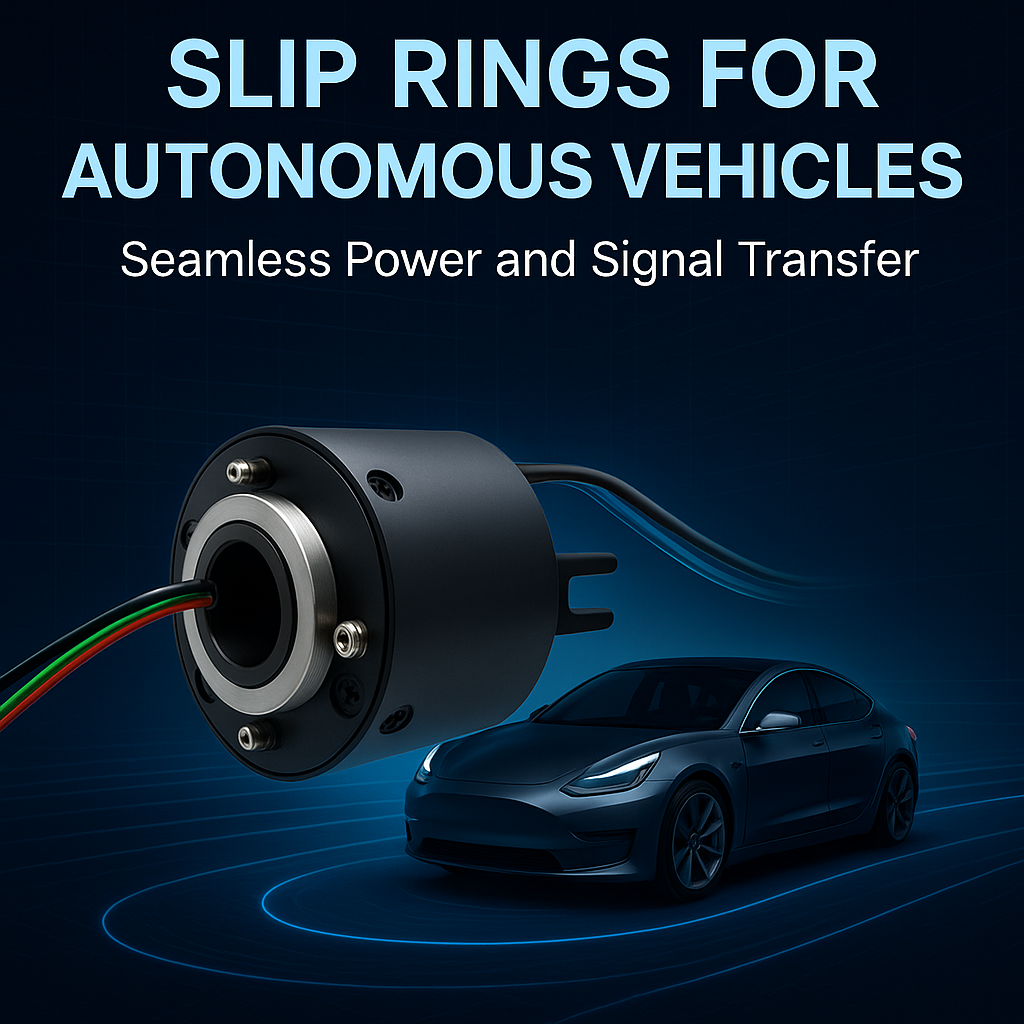Slip Rings for Autonomous Vehicles | Power and Signal Transfer
The Role of Slip Rings in Autonomous Vehicle Systems | Seamless Power and Signal Transfer
Slip Rings for Autonomous Vehicles are essential components that ensure seamless 360° power and data transfer for real-time navigation and control.
As the world moves rapidly toward full autonomy in transportation, the demand for advanced and reliable components in autonomous vehicles is greater than ever. One critical yet often overlooked technology that supports this evolution is the slip ring.
Slip rings enable continuous 360° electrical connection between stationary and rotating parts, which is essential for many systems in autonomous vehicles. Without slip rings, maintaining uninterrupted signal transmission during rotation would be extremely difficult.
 Where Slip Rings Are Used in Autonomous Vehicles
Where Slip Rings Are Used in Autonomous Vehicles
1. 360° LiDAR Systems
LiDAR (Light Detection and Ranging) sensors are crucial for autonomous navigation, providing real-time 3D mapping of the vehicle’s surroundings.
Slip rings allow the LiDAR unit to rotate continuously while transmitting high-speed data, ensuring no loss of information.
2. Pan-Tilt-Zoom (PTZ) Camera Systems
Advanced PTZ cameras mounted on autonomous vehicles rotate to monitor traffic, obstacles, and pedestrians.
Slip rings facilitate seamless rotation without cable tangling, enabling uninterrupted video and control signal transmission.
3. Radar and Antenna Systems
Autonomous vehicles often use radar to detect nearby objects, especially under poor weather conditions.
Slip rings in radar systems allow for the rotation of antenna components, maintaining consistent power and data transmission.
4. Vehicle-to-Infrastructure (V2I) Communication Units
Some rotating communication devices use slip rings to stay continuously connected to smart city infrastructure while on the move.

 Why Slip Rings Are Critical for Autonomous Vehicles
Why Slip Rings Are Critical for Autonomous Vehicles
-
360° Continuous Rotation: Ensures sensors and cameras can rotate without physical limitations.
-
Uninterrupted Signal Transmission: Critical for real-time data such as LiDAR scans, radar feedback, and video feeds.
-
High Reliability: Slip rings designed for automotive-grade applications withstand harsh environments, vibrations, and temperature variations.
-
Compact Design: Modern slip rings are engineered to fit into compact spaces within autonomous vehicle architectures.
 Key Considerations When Choosing a Slip Ring for Autonomous Vehicles
Key Considerations When Choosing a Slip Ring for Autonomous Vehicles
-
Data Transmission Requirements: Support for high-speed Ethernet, HD video (HD-SDI), and fiber optic signals.
-
Durability and Environmental Resistance: Ability to function reliably under shock, vibration, humidity, and extreme temperatures.
-
Low Electrical Noise: Essential for maintaining signal integrity, especially in safety-critical applications.
-
Maintenance-Free Operation: Autonomous vehicles require components with minimal servicing needs to maximize uptime.
 Future Outlook
Future Outlook
As autonomous technology evolves, slip ring designs are becoming more sophisticated.
New advancements include hybrid slip rings that combine electrical, optical, and fluidic transmission in a single compact unit—paving the way for even more robust and versatile autonomous systems.
Slip rings might not be the most talked-about component, but their contribution to the success of autonomous vehicles is truly vital.
Without them, seamless 360° sensing and real-time decision-making would not be possible.
